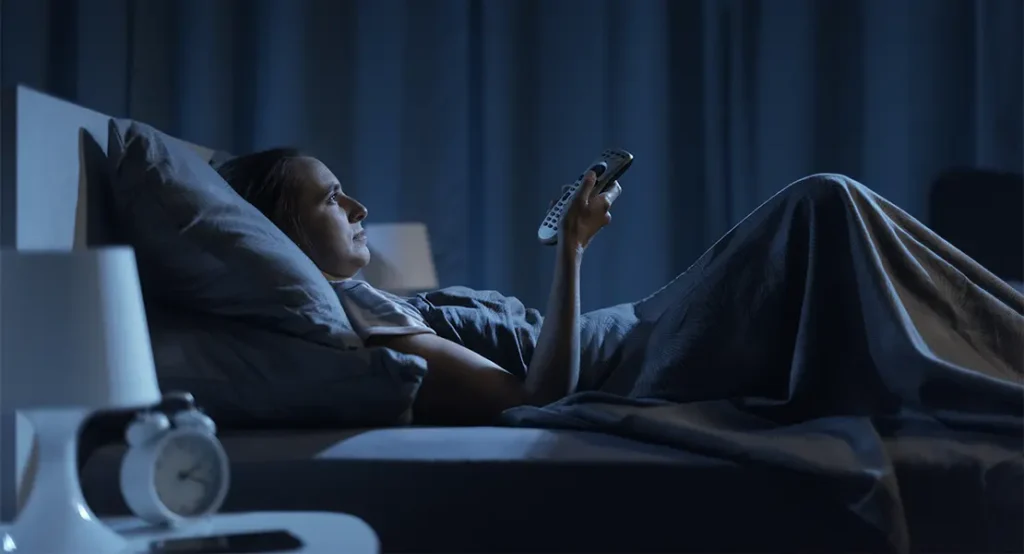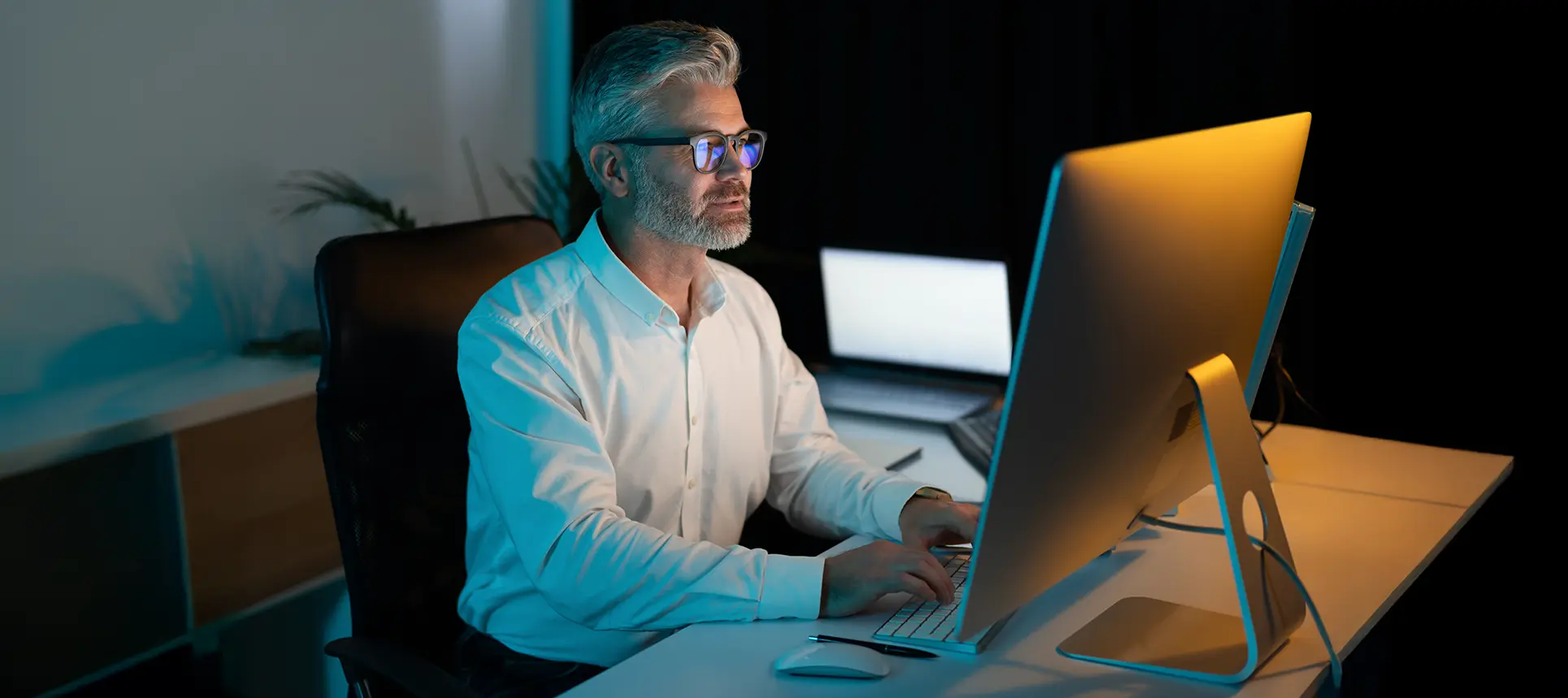You’ve probably heard a lot about blue light lately—whether from your phone, tablet, computer, or even energy-efficient lighting. But how much do you really know about its impact on your eyes? If you’ve ever wondered whether hours spent in front of a screen could be doing more harm than good, particularly when it comes to long-term vision and cataract risk, you’re not alone. The conversation around blue light and eye health is growing—and for good reason.
In this article, we’re going to dig deep into what blue light actually is, how it interacts with your eyes, and whether it truly has a role in the development of cataracts. We’ll also look at steps you can take right now to protect your vision without needing to swear off screens completely. So let’s jump in.
What Is Blue Light, Exactly?
Let’s start with the basics. Blue light is a part of the visible light spectrum. It has a short wavelength, which means it produces a relatively high amount of energy compared to other types of visible light. In fact, it sits just next to ultraviolet (UV) light on the spectrum—though unlike UV, blue light is visible to the human eye.
There are two main sources of blue light: natural and artificial. The biggest natural source is, of course, the sun. But in today’s world, we’re increasingly surrounded by artificial blue light—from LED lighting to the backlit screens of phones, tablets, laptops, and televisions. While our eyes are naturally adapted to handle some exposure to blue light, the problem arises when that exposure becomes prolonged and excessive.
Unlike UV light, which gets mostly filtered out by the cornea and lens, blue light penetrates all the way to the retina. That’s part of the reason why experts are concerned about the potential cumulative effects over time. But what exactly does that mean for your eyes—and how does it relate to cataracts?
How Blue Light Affects the Eye
To understand the potential dangers, it’s useful to consider how the eye processes light in general. When light enters the eye, it passes through several transparent structures—the cornea, aqueous humour, lens, and vitreous humour—before reaching the retina. The retina contains photoreceptor cells that convert light into electrical signals, which the brain interprets as vision.
Blue light, being high-energy, scatters more easily than other visible light. This scattering reduces contrast and can lead to digital eye strain. If you’ve ever experienced tired eyes, blurry vision, or headaches after a long day staring at screens, that’s your eyes reacting to blue light exposure.
Now, while digital eye strain is unpleasant, it’s usually temporary. The bigger question is whether long-term blue light exposure can cause actual damage—particularly to the lens and retina—and whether that damage might contribute to cataract formation over time. This is where the science gets both fascinating and slightly more complex.
What Are Cataracts?
Before we dive deeper, let’s briefly talk about cataracts. A cataract is the clouding of the eye’s natural lens. This cloudiness gradually blocks or scatters light as it passes through the eye, leading to blurred vision, glare sensitivity, and in severe cases, significant vision loss.
Cataracts are primarily age-related, with most people developing them in later life. However, several other risk factors are known to increase the likelihood of cataract formation—such as smoking, diabetes, prolonged UV exposure, and certain medications like corticosteroids.
In recent years, researchers have begun exploring whether prolonged exposure to blue light could also be a risk factor. The lens plays a crucial role here, because it helps focus light onto the retina. If blue light can penetrate deep into the eye, might it also accelerate the oxidative stress that contributes to cataract development?
The Scientific Debate: Is Blue Light a Cataract Risk?
This is where things get a bit more controversial. Some laboratory studies on animals and cell cultures suggest that high-energy blue light can cause oxidative stress in the lens and retina. This stress may, in theory, accelerate the breakdown of proteins in the lens, contributing to the cloudiness characteristic of cataracts.
However, most of these studies involve intense blue light levels—not the kind you’re typically exposed to from a smartphone or laptop. So while the mechanism makes sense on paper, real-world evidence is still somewhat lacking. Most ophthalmologists agree that more long-term, human-based research is needed before we can say definitively that blue light from screens causes cataracts.

That said, the absence of conclusive proof doesn’t necessarily mean there’s no risk. Especially when you consider that we’re spending more time in front of screens than ever before—often starting from a young age. So it’s worth being cautious, even if the science hasn’t fully caught up yet.
Blue Light and Ageing of the Lens
There’s another piece to this puzzle: oxidative ageing. As we age, the proteins in our lenses begin to degrade naturally. This degradation is sped up by oxidative stress—when harmful free radicals accumulate and damage cells.
Some researchers believe blue light may contribute to this process, albeit indirectly. When blue light hits the retina and the lens, it can trigger photo-oxidative reactions, especially if antioxidants in the eye are depleted. Over time, these reactions may cause structural changes in the lens that set the stage for cataract development.
This theory helps explain why some studies link increased screen time or artificial lighting to changes in eye clarity or earlier signs of lens opacities. While not yet conclusive, these findings support the idea that managing blue light exposure could be beneficial for long-term eye health.
What About Blue Light Glasses?
You’ve probably seen advertisements for blue light filtering glasses, which claim to reduce eye strain, improve sleep, and even protect against potential eye damage. But do they really work?
Well, the answer is mixed. Some users do report less eye strain and fewer headaches after wearing them, especially if they’re in front of screens all day. However, the scientific community is still divided on their effectiveness, particularly when it comes to preventing long-term damage or cataract formation.
That said, there’s no harm in trying them—especially if you experience regular discomfort from screen use. Just don’t rely on them as your only line of defence. Protecting your eyes involves a broader strategy, which we’ll come to shortly.
Are Screen Filters and Device Settings Helpful?
Modern devices often come with built-in blue light reduction settings—sometimes branded as “Night Mode” or “Eye Comfort Mode.” These settings typically shift the screen’s colour temperature towards warmer tones, which reduces the proportion of blue light emitted.
While they won’t block blue light entirely, these settings can make a noticeable difference over time. Plus, they’re easy to activate and don’t interfere with your ability to use the device. Combining these settings with breaks from screen time and proper lighting can significantly ease digital eye strain and reduce potential risk.
There are also physical screen protectors that filter blue light. If you use a device for many hours a day—especially at close range—it may be worth investing in one for added peace of mind.
How Sleep Is Affected by Blue Light
Blue light doesn’t just impact your eyes—it also affects your brain. That’s because it plays a key role in regulating your circadian rhythm, the internal clock that controls your sleep-wake cycle. Exposure to blue light in the evening—especially from screens—can trick your brain into thinking it’s still daytime.

This disrupts melatonin production, the hormone that makes you feel sleepy. The result? You may find it harder to fall asleep or experience poorer sleep quality overall.
Poor sleep can indirectly impact eye health too. Like every other part of your body, your eyes need rest to repair and rejuvenate. Chronic sleep deprivation has been linked to dry eye syndrome, twitching, and even longer-term vision problems. So managing blue light exposure at night can be doubly beneficial.
Practical Tips for Reducing Blue Light Exposure
So now that we know the potential risks and mechanisms, what can you actually do to reduce your blue light exposure—without giving up the digital devices you rely on?
Here are some simple, practical tips:
Follow the 20-20-20 Rule
Every 20 minutes, take a 20-second break and look at something 20 feet away. This simple habit can make a huge difference to your overall eye comfort. When you’re staring at a screen for prolonged periods, your blink rate drops, and your eye muscles stay locked in a fixed position, leading to strain and fatigue. By intentionally looking into the distance every 20 minutes, you give your eyes a much-needed chance to relax, rehydrate, and reset.
Not only does this rule help reduce digital eye strain, but it also encourages better posture and awareness of how long you’ve been using your device. Incorporating it into your routine is easy—you can set a reminder or use apps specifically designed to prompt breaks. Over time, following the 20-20-20 rule can help prevent discomfort, improve productivity, and promote healthier screen habits without interrupting your workflow.
Use Night Mode
Most modern smartphones, tablets, and computers now come with a “Night Mode” or “Blue Light Filter” feature. When activated, this setting changes the screen’s colour temperature to warmer hues, reducing the amount of blue light emitted. While this doesn’t block blue light completely, it does significantly cut down exposure during critical evening hours when your eyes and brain are winding down for rest.
Using Night Mode is especially helpful in preventing disruption to your sleep cycle. Since blue light can suppress melatonin, enabling this setting a few hours before bedtime can support your natural circadian rhythm and improve sleep quality. It’s a small tweak that takes seconds to activate, but it can have a long-term benefit for both your eye health and your sleep hygiene.
Consider Blue Light Glasses
Blue light filtering glasses are designed to reduce the amount of high-energy visible light that reaches your eyes. They often feature lenses with a slight yellow tint that counteracts the effects of blue light and helps alleviate the discomfort that comes from staring at screens for hours. While not all experts agree on their effectiveness, many users report feeling less eye strain, dryness, and fatigue when they use them regularly.
These glasses can be especially useful if your job involves working on digital devices throughout the day or if you find yourself experiencing symptoms of digital eye strain. They’re also a good option for those who may not always remember to enable device-based blue light filters. Available in prescription and non-prescription versions, they’re a practical addition to your eye-care toolkit, even if you use other methods in parallel.
Adjust Ambient Lighting
Using your devices in a dark room might seem cosy, but it forces your eyes to constantly adjust between the bright screen and the dark surroundings. This creates more visual stress and contributes to faster eye fatigue. To avoid this, try to use your screens in well-lit environments with soft, ambient lighting that reduces the contrast between your screen and its surroundings.
Adding a desk lamp with a warm hue or using natural light from a nearby window can help create a more balanced visual setting. Just avoid harsh overhead lights or glare on your screen. A well-lit space not only reduces the strain caused by blue light but also makes it easier for your eyes to focus for extended periods—especially during work or study sessions.
Limit Screen Time Before Bed
One of the most effective ways to reduce blue light exposure is to stop using screens at least an hour before bedtime. This allows your body to naturally increase melatonin production and prepare for restful sleep. Continued exposure to screens late at night can trick your brain into staying alert, which not only delays sleep but can also affect sleep quality, leading to tired and dry eyes the next day.

Instead of scrolling through your phone or watching TV right before sleep, try switching to screen-free alternatives like reading a physical book, journaling, or doing a short meditation. Making a conscious effort to disconnect from your devices before bed can lead to more restorative rest—and give your eyes the break they need after a full day of digital exposure.
Nutritional Support for Your Eyes
Here’s something people often overlook: your diet can also help protect your eyes from blue light damage. Antioxidants like lutein and zeaxanthin, found in leafy greens, eggs, and brightly coloured fruits and vegetables, help filter high-energy light and protect your retina.
Other beneficial nutrients include:
- Vitamin C: Supports overall eye health and helps slow the progression of cataracts.
- Vitamin E: An antioxidant that combats free radical damage in eye tissues.
- Omega-3 Fatty Acids: Help reduce inflammation and support the tear film.
If your diet is lacking in these areas, you might consider supplements—but always consult your doctor or optometrist first.
Final Thoughts
The truth is, we’re still learning about all the ways blue light might influence our eye health over time. While the evidence linking blue light from screens directly to cataracts is not yet conclusive, there’s enough concern about its effects on oxidative stress, lens ageing, and retinal health to take the matter seriously.
We live in a digital world, and screens are here to stay. But that doesn’t mean your eyes have to suffer for it. With a few simple lifestyle adjustments—from using screen filters and taking regular breaks to eating eye-friendly foods—you can significantly reduce the impact of blue light and protect your vision for the long haul.
If you’re concerned about cataracts or have noticed any changes in your vision, don’t hesitate to consult a qualified ophthalmologist. Early intervention and regular check-ups are key to keeping your eyes healthy and your sight clear—no matter how many screens you’re surrounded by.
Certainly! Here are the four most relevant and academically robust references to support the key points in your article on blue light and cataract development:
Academic References:
- Behar-Cohen, F., et al. (2011). Light-emitted diode (LED) displays: a source of blue light hazard. Free Radical Biology and Medicine, 51(7), 1342–1348.
- O’Hagan, J. B., Khazova, M., & Price, L. L. A. (2016). Low-energy light bulbs, computers, tablets and the blue light hazard. Eye, 30, 230–233.
https://doi.org/10.1038/eye.2015.261 - Mainster, M. A., & Turner, P. L. (2010). Blue light hazard: new knowledge, new approaches to maintaining ocular health. Photochemistry and Photobiology, 86(3), 563–573.
https://doi.org/10.1111/j.1751-1097.2010.00735.x - Downie, L. E., et al. (2018). The impact of computer use on eye health and the role of blue light filtering lenses. Clinical and Experimental Optometry, 101(1), 4–13.
https://doi.org/10.1111/cxo.12657

